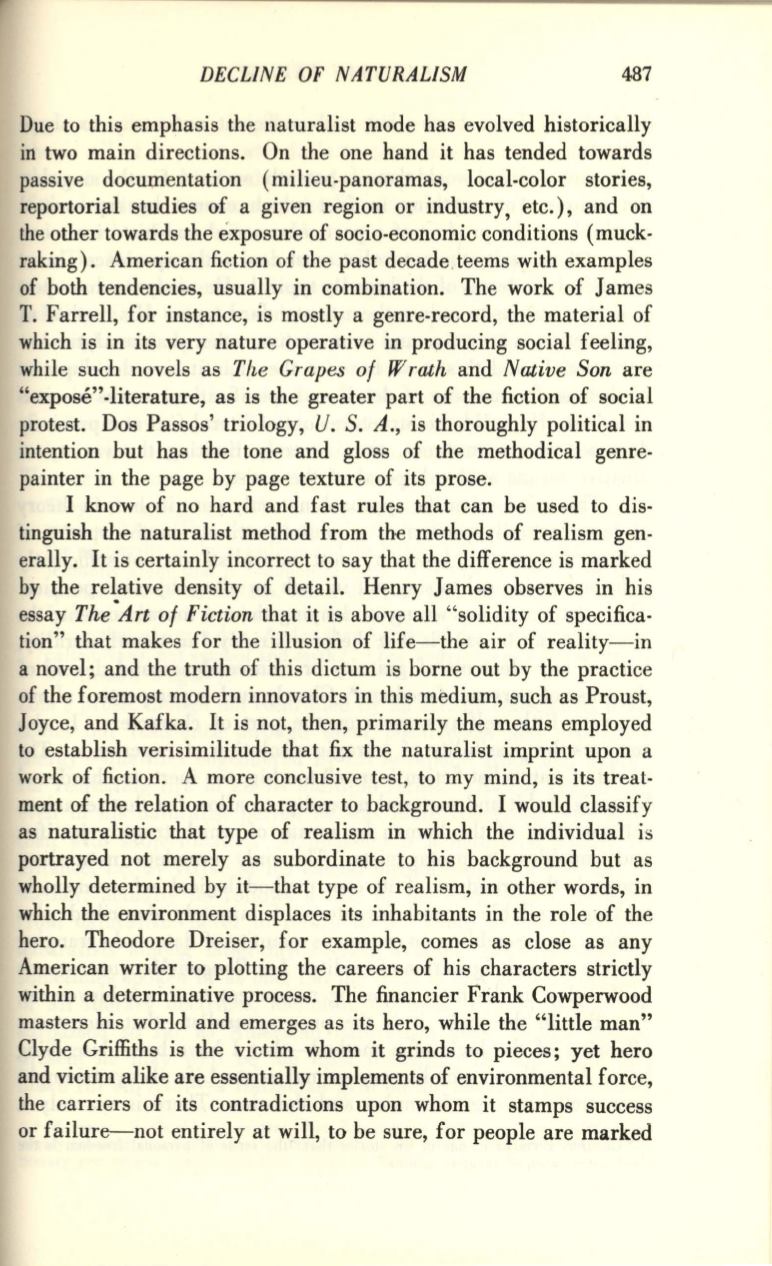
DECLINE OF NATURALISM
487
Due to this emphasis the naturalist mode has evolved historically
in two main directions. On the one hand it has tended towards
passive documentation (milieu-panoramas, local-color stories,
reportorial studies of a given region or industry, etc.), and on
the other towards the exposure of socio-economic conditions (muck–
raking). American fiction of the past decade teems with examples
of both tendencies, usually in combination. The work of James
T.
Farrell, for instance, is mostly a genre-record, the material of
which is in its very nature operative in producing social feeling,
while such novels as
The Grapes of Wrath
and
Native Son
are
"expose"-literature, as is the greater part of the fiction of social
protest. Dos Passos' triology,
U. S. A.,
is thoroughly political in
intention but has the tone and gloss of the methodical genre–
painter in the page by page texture of its prose.
I know of no hard and fast rules that can be used to dis–
tinguish the naturalist method from the methods of realism gen–
erally. It is certainly incorrect to say that the difference is marked
by the relative density of detail. Henry James observes in his
essay
The "Art of Fiction
that it is above all "solidity of specifica–
tion" that makes for the illusion of life-the air of reality-in
a novel; and the truth of this dictum is borne out by the practice
of the foremost modern innovators in this medium, such as Proust,
Joyce, and Kafka.
It
is not, then, primarily the means employed
to establish verisimilitude that fix the naturalist imprint upon a
work of fiction. A more conclusive test, to my mind, is its treat–
ment of the relation of character to background. I would classify
as naturalistic that type of realism in which the individual is
portrayed not merely as subordinate to his background but as
wholly determined by it-that type of realism, in other words, in
which the environment displaces its inhabitants in the role of the
hero. Theodore Dreiser, for example, comes as close as any
American writer to plotting the careers of his characters strictly
within a determinative process. The financier Frank Cowperwood
masters his world and emerges as its hero, while the "little man"
Clyde Griffiths is the victim whom it grinds to pieces; yet hero
and victim alike are essentially implements of environmental force,
the carriers of its contradictions upon whom it stamps success
or failure-not entirely at will, to be sure, for people are marked


